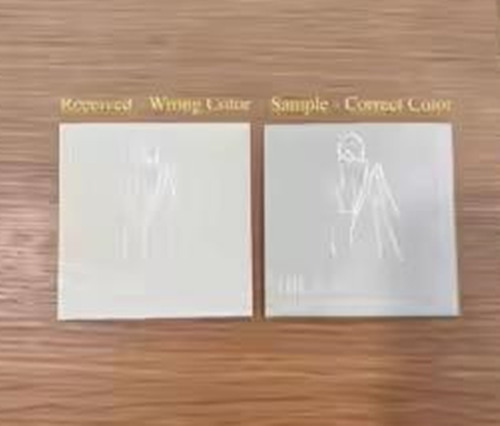In the printing process, color deviation refers to the noticeable difference between the printed colors and the expected or sample colors. This issue is common in the printing industry and can be caused by various factors related to materials, processes, equipment, and more. Below is a detailed breakdown of the causes of color deviation in printing:

●Ink Quality Inconsistency: Different batches of ink may vary in composition, viscosity, drying time, and other properties, leading to inconsistent color performance during printing. Using substandard ink or ink from different suppliers can also cause color deviation.
●Ink Thickness: The thickness of the ink layer during printing directly affects color saturation. Thicker ink layers may result in deeper, more saturated colors, while thinner layers may appear lighter or less vibrant.
●Ink Transparency and Coverage: Transparent and opaque inks interact differently, especially in four-color printing (CMYK). The sequence of ink application and transparency can affect the final color outcome.
●Paper Absorbency: Different types of paper absorb ink differently, which can result in varying color outcomes. Papers with high absorbency may cause the colors to appear lighter or blurred, while low-absorbency papers produce brighter colors.
●Paper Color: The inherent color of the paper (e.g., whiteness or tinted paper) influences the final print color. Paper with low whiteness might cause the print color to shift warmer or cooler.
●Paper Gloss: Glossy, matte, or textured papers can affect how ink reflects and absorbs, leading to color deviation.
●Printing Machine Calibration Issues: The precision and condition of the printing machine are critical to color consistency. Variations in machine pressure, speed, or ink distribution can all lead to color differences.
●Equipment Aging: Machines that are not regularly maintained may produce unstable or distorted colors due to wear and tear.
●Drying Speed: Ink drying too fast or too slow can affect color accuracy. For example, in UV printing, slow drying may cause the colors to appear darker.
●Printing Plate Quality: Deterioration of the printing plate or loss of image sharpness can also result in color deviation.
●Color Space Conversion Errors: In the design stage, colors are often created using RGB color mode, while printing is done using CMYK mode. The difference in color spaces can lead to color deviation if not properly managed.
●Differences Between Display and Print: The color displayed on a monitor and the actual printed color can differ. If the designer’s monitor is not color-calibrated or if the printing occurs under non-standard lighting, this can lead to color deviations.
●Inaccurate Color Samples: If standard color references are not used before printing, or if there is a mismatch between the design files and printing equipment, color deviation may occur.
●Temperature and Humidity Fluctuations: Environmental conditions during printing, such as changes in temperature and humidity, affect both the drying speed of ink and the absorbency of paper, leading to color deviation. High humidity may cause paper to absorb moisture and warp, impacting printing accuracy, while extreme temperatures may alter ink viscosity.
●Lighting Conditions: The color of the printed piece may appear different under various lighting conditions. Standard color proofing is usually conducted under specific lighting conditions to avoid color deviation caused by differing light sources.
●Control of Printing Process: The experience and skill of the operator play a significant role in managing color deviation. Inappropriate machine calibration or insufficient understanding of ink and paper combinations may lead to inaccurate color control.
●Neglect in Monitoring and Proofing: Without strict color-proofing protocols during the printing process or regular monitoring of color shifts, cumulative color deviations can occur.